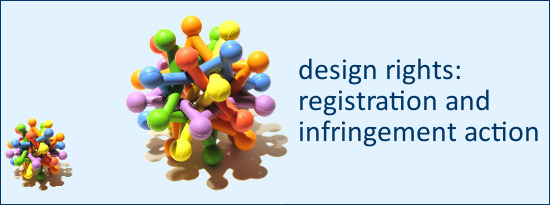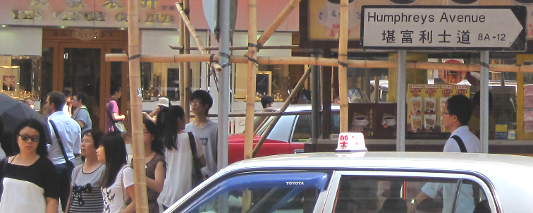
Design rights relate to form & appearance rather than to technical construction principles or “ideas”
Designs are protected in UK law by:
- Registration under the Registered Designs Act 1949 (RDA) as amended.
- Unregistered design right under the Copyright, Designs and Patents Act 1988 (CDPA).
Designs may also be protected by copyright where the design is surface decoration or for an artistic work like a building.
Copyright and registered designs are cumulative. A claimant must rely on copyright where copyright and unregistered design right reside in the same design.
Registered designs
How is a registered design applied for?
An application for registration of a design is made to the UK Intellectual Property Office, www.ipo.gov.uk. Priority may be claimed from an earlier design application filed within 6 months of the UK application in a Convention country.
The application must be made by the proprietor of the design. The proprietor is the author of the design except where:
- The author is an employee and the design is made in the course of employment. The employer is the proprietor.
- The design is commissioned. The commissioner is the proprietor.
- The design is assigned. The assignee is the proprietor.If unregistered design right subsists in the design, the design right owner must make the application for registration.
The application is examined and cannot be refused by the Registrar unless:
- The wrong applicant makes the application.
- The design fails to meet the criteria for registration.The date of registration is generally the date of filing the application.
Proceedings can only be taken in respect of infringements occurring after the certificate of registration is granted (s. 7A(6) RDA).
The procedure for obtaining registration of a design is usually quick and relatively inexpensive.
What is a registrable design?
“Design” means the appearance of the whole or part of a product resulting from the features of, in particular, the lines, contours, colours, shape, texture or materials of the product or its ornamentation (s. 1(2) RDA):
- The design can be of the product itself (or part of the product) or its ornamentation.
- The design need not have aesthetic quality.
- External or internal features of appearance are generally protected.”Product” means any industrial or handicraft item other than a computer program and includes packaging, get-up, graphic symbols, typographical typefaces and parts intended to be assembled into a complex product.
A “complex product” is composed of at least two replaceable component parts permitting disassembly and reassembly of the product (s. 1(3) RDA).
The design need not be industrially exploited but can reside in one-off works.
- 2D and 3D designs are included.
- The design of spare parts is registrable provided the other criteria for registrability are met.
- Computer programs are excluded
Infringement of a registered design
A registered design is infringed by any use without the consent of the proprietor of (s. 7 RDA):
- The design.
- Any design which does not produce on the informed user a different overall impression, taking into account the freedom of the author in creating that design. The informed user has experience of similar designs and is reasonably discriminating (Procter & Gamble v. Reckitt Benckiser (2007).Infringing uses of the above include:
- The making, offering, putting on the market, importing, exporting or using of a product in which the design is incorporated or to which it is applied.
- Stocking such a product for those purposes.Infringement of a registered design is actionable by the proprietor but not a licensee. A defendant may bring proceedings for groundless threats of infringement proceedings (s. 26 RDA).

Unregistered designs
What does unregistered design right subsist in?
Design right subsists in the design of any aspect of the shape or configuration (whether internal or external) of the whole or part of an article (s. 213 CDPA):
- Purely functional designs are included.
- The shape of part of an article can be protected.
Design right cannot be claimed in:
- Methods or principles of construction.
- Parts of articles that are designed to fit with or match another article.
- Surface decoration whether 2D or 3D.
Infringement of unregistered design right
Design right is infringed by (s. 226-228 CDPA):
- Copying the design directly or indirectly to make articles exactly or substantially to that design.
- Knowingly dealing in infringing copies for commercial purposes.
Remedies are essentially the same as for copyright infringement, except that there is a remedy for groundless threats of design right infringement proceedings (s. 253 CDPA).
Community designs
Community designs may be obtained as additions or alternatives to UK designs law protection. The advantage is that Community designs are valid and enforceable throughout the EC.
2 types of Community right can subsist in the same design:
- Unregistered Community design – arises automatically the design is published in the EC.
- Registered Community design – available on application from the Office for Harmonisation in the Internal Market (Trade Marks and Designs) (OHIM)www.oami.europa.eu
The criteria for Community designs (registered or unregistered) are the same as for UK registered designs. “Design” means the appearance of the whole or part of a product and covers industrial or handicraft items, logos, packaging, get-ups and typographical typefaces provided they are new and of individual character. Protection cannot be claimed for functional features or interconnections.
Registered Community design became obtainable from OHIM with effect from 1 April 2003. Once granted, a Community registration can be used to prevent any unauthorised commercial use of the design anywhere in the EC for a maximum period of 25 years.
Unregistered Community design came into force on 6 March 2002. It too precludes commercial use of the design but only where there has been copying and only for a period of 3 years.




